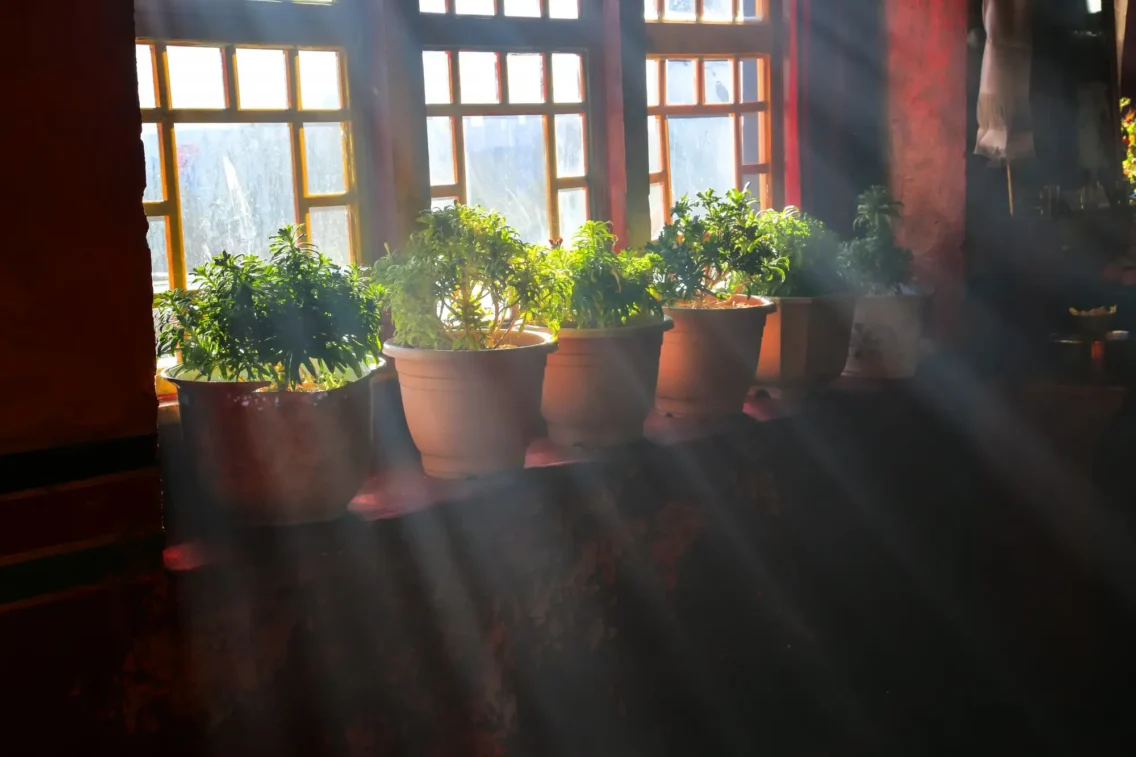Urban Gardening for Beginners: Grow Anywhere, Anytime

If you’ve ever thought you couldn’t garden because you don’t have a backyard, think again. Urban gardening makes it possible to grow herbs, veggies, or flowers—even if your space is smaller than a yoga mat. Whether you’ve got a balcony, windowsill, or just a sunny corner, this beginner-friendly guide will show you how to create your own green retreat, from choosing the right spot and easy-to-grow plants to overcoming common challenges.
Disclaimer: This post is for informational and inspirational purposes only. We’re not affiliated with, sponsored by, or receiving compensation from any links, products, or videos mentioned here. All recommendations come from our own experiences and research to help you enjoy urban gardening in your own way.
Step 1: Find the Best Spot for Your Urban Garden
Before you rush out to buy seeds, pots, or fancy tools, the first and most important step is choosing the right location for your plants. Think of it like picking a home for a friend; you want them to be comfortable, safe, and in an environment where they can thrive. Your garden’s success will depend heavily on where you place it, so take a little time to observe your space before committing.
Here are a few key things to consider:
- Sunlight: Most herbs and vegetables need at least 6–8 hours of daylight. Watch how the sun moves through your space during the day.
- Climate: Does your city tend to be humid, hot, dry, or windy? Some plants love moisture in the air, while others prefer a drier atmosphere.
- Wind exposure: If you live in a high-rise or windy neighborhood, you might need windbreakers like trellises, mesh screens, or even tall companion plants for protection.
Tip: Light is the number one factor in plant success. Measure it before you plant anything—you’ll thank yourself later.
If sunlight is scarce, don’t give up. Opt for shade-loving plants like ferns, lettuce, or mint, or invest in a small grow light so you can garden year-round, no matter where you live.
How to handle common problems:
- Too much sun: Move plants to a partially shaded area or use shade cloth to protect delicate leaves.
- Not enough sun: Rotate plants daily toward the light source, or use grow lights to supplement.
- Wind damage: Secure pots with heavier bases or group plants together for mutual protection.
Step 2: Pick Your Urban Gardening Method
Once you’ve found the perfect spot, it’s time to decide how you want to grow your garden. This is where the fun begins; urban gardening offers a range of creative methods that can adapt to even the smallest spaces. Whether you’re using a sunny windowsill, a cozy balcony, or just a blank wall, there’s a style that will work for you.
1. Container Gardening
This is the most beginner-friendly method and works for almost any plant. All you need are containers: pots, recycled buckets, old tea tins, or anything that can hold soil and has drainage holes.
Best for: Herbs, peppers, cherry tomatoes, succulents.
Pro tip: Choose lightweight soil mixes to make moving your pots easier and improve drainage.
Common problems & solutions:
- Poor drainage: Drill extra holes or use pot feet to lift containers off the ground.
- Soil compaction: Refresh topsoil every few months to maintain airflow for roots.
2. Vertical Gardening
If you’re short on floor space, go up instead of out. Vertical gardens use walls, fences, or hanging systems to grow plants in tiers, making the most of unused vertical areas.
Best for: Strawberries, lettuce, trailing flowers.
Bonus: Adds instant greenery to plain walls, doubling as décor.
Common problems & solutions:
- Uneven watering: Install a drip irrigation system or water from the top until moisture reaches all tiers.
- Wall damage: Use waterproof backing panels before mounting.
3. Windowsill Gardening
For those with no outdoor space, a bright windowsill can become a thriving mini garden.
Best for: Herbs like basil, chives, and parsley.
Tip: Rotate your pots every week to ensure even growth and prevent plants from leaning toward the light.
Common problems & solutions:
- Drafty windows: Move plants slightly inward to avoid temperature stress.
- Overheating from glass: Use sheer curtains during peak sun hours.
4. Hydroponics for Beginners
A high-tech but surprisingly easy option, hydroponics grows plants in water enriched with nutrients, no soil needed.
Best for: Leafy greens, herbs.
Why it works: Less mess, faster growth, and perfect for indoor spaces.
Common problems & solutions:
- Algae growth: Keep systems covered and out of direct sunlight.
- Nutrient imbalance: Test water weekly and adjust nutrient solutions as needed.
Step 3: Choose the Right Plants for Your Urban Garden
Now comes the fun part: deciding what to grow. Your first garden should be a mix of plants that are easy to care for, quick to grow, and rewarding to harvest. Start simple, then expand as your confidence grows.
Beginner-friendly options include:
- Herbs: Basil, mint, thyme, parsley.
- Vegetables: Cherry tomatoes, peppers, lettuce, spinach.
- Flowers: Marigolds, zinnias, geraniums.
If you’re unsure what will thrive in your area, visit a local nursery and ask for recommendations. Local growers can share valuable insights about plant varieties that perform well in your specific climate, tips that search engines might not mention.
Common problems & solutions:
- Slow growth: Check if the plant has enough light and nutrients.
- Pests: Use natural deterrents like neem oil or companion planting (e.g., marigolds to repel aphids).
- Yellow leaves: Usually a sign of overwatering—allow soil to dry out before watering again.
Step 4: Set Yourself Up for Success
A little preparation goes a long way in helping your plants thrive. Urban gardening may be low-maintenance, but success still starts with the right foundation.
Here’s your starter toolkit for a healthy, eco-friendly garden:
- Quality soil mix: Choose container-specific potting soil—it’s lighter, drains better, and helps prevent root rot. For a greener option, try organic or compost-enriched mixes.
- Fertilizer: Use gentle organic liquid fertilizers every few weeks to keep nutrients flowing.
- Watering can or spray bottle: These give you better control over moisture and help avoid overwatering.
Common problems & solutions:
- Overwatering: Use pots with drainage holes and water only when the top inch of soil feels dry.
- Underfeeding: Fertilize every 2–4 weeks during the growing season to keep plants strong.
- Root-bound plants: Repot once a year into a slightly larger container to give roots room to grow.
Pro tip: Create a simple watering schedule. In summer, your plants might need daily care, while in cooler months, 2–3 times a week is often enough. Always listen to your plants—if leaves droop or soil feels dry, it’s time for a drink.
Step 5: Make Your Garden a Part of Your Life
Urban gardening is more than just a hobby; it’s a daily ritual that can boost your mood and help you slow down. The key is to integrate it into your lifestyle so it becomes something you look forward to, not just another task.
Try these ideas:
- Place plants where you’ll naturally see them, so you’ll remember to check on them.
- Combine your gardening time with something enjoyable, like sipping your morning coffee or listening to a podcast.
- Take a few moments to prune, water, or simply admire your plants; it’s surprisingly therapeutic.
The first time you spot a tiny sprout or taste a tomato you grew yourself, you’ll understand the magic. It’s like celebrating a small win every day, right in your own home.
Common problems & solutions:
- Losing motivation: Set small, specific gardening goals each week, like planting two new herb seeds, repotting one plant, trimming dead leaves, or watering every other morning. Small wins build momentum and keep your garden (and your enthusiasm) thriving.
- Neglected plants: Automate watering with self-watering pots or irrigation spikes if you travel often.
- Overcrowding: Regularly prune and harvest to keep plants healthy and productive.
FAQS
1. What are the easiest plants for beginners to grow indoors?
If you’re just starting, go for low-maintenance plants that forgive a little neglect. Herbs like basil, mint, and chives are great starters. For greenery, try snake plants, pothos, or succulents—they thrive with minimal effort and add instant life to your space.
2. How much sunlight do indoor herbs really need?
Most herbs love 6–8 hours of sunlight per day, but don’t worry if your home doesn’t get that much. Place them on a south- or east-facing window where they’ll get bright, indirect light. If natural light is limited, a small grow light can easily make up the difference.
3. What’s the best soil mix for container plants?
Choose a well-draining potting mix designed for container gardening—it’s lighter and prevents root rot. A mix of peat, perlite, and compost works beautifully. You can also go greener by adding a bit of organic compost or coconut coir for better moisture control.
Why Urban Gardening is Perfect for Small Spaces
Urban gardening thrives on making the most of what you already have—a sunny windowsill, a balcony railing, or even the corner of your rooftop can become a productive little ecosystem. By going vertical, using containers, and picking compact plant varieties, you can turn even a few square feet into a lush, green haven.
Small-scale gardens come with hidden perks: less maintenance, lower water use, and fewer pests to manage. That means more time to relax with your morning coffee among your plants and less time wrestling with weeds. And here’s the beautiful truth—plants don’t care if you have a backyard. What they need is light, water, and a bit of love.
The rewards go beyond greenery. Gardening engages your senses and promotes mindfulness, helping to lower stress and boost mood. A study by the University of Exeter suggests that even a few minutes of tending plants can lift your mood and increase focus by up to 15%. Plus, there’s the joy of convenience—fresh herbs and vegetables just steps away—and the chance to express your creativity through color, texture, and design.
Starting your own garden, no matter the size, shifts your perspective. You begin noticing sunlight patterns, seasonal changes, and the slow but satisfying rhythm of growth. With a few pots, some well-chosen plants, and a little care, even the tiniest nook can become your sanctuary.
So start today—pick one plant, find a spot, and let your space bloom. Your future self, coffee in hand and surrounded by greenery, will thank you.
If you want to explore more about the benefits of sunlight and how caring for yourself can be just as rewarding as tending a garden, check out more articles on our website.


